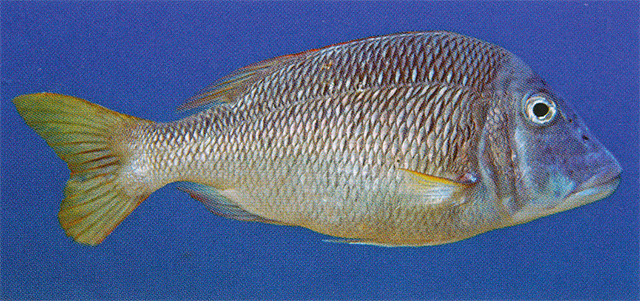| Lethrinidae (Emperors or scavengers), subfamily: Lethrininae |
| 56 cm TL (male/unsexed) |
|
reef-associated; brackish; marine; depth range 5 - 35 m, non-migratory |
| Western Pacific: southern Indonesia, northern Australia, Papua New Guinea and the Solomon Islands. There has been considerable confusion in the use of names for this species. In recent literature it is referred to as Lethrinus fraenatus (a junior synonym of Lethrinus nebulosus) or Lethrinus fletus (a junior synonym of Lethrinus laticaudis). |
|
Dorsal spines (total): 10-10; Dorsal soft rays (total): 9-9; Anal spines: 3-3; Anal soft rays: 8-8. Cheek without scales; the inner base of pectoral fins densely covered with scales. Body is tan, brown or yellow with scattered irregular blotches; head brown or yellow with blue dots on cheeks and short blue stripes radiating in front and behind the eye, sometimes a number of blue cross stripes between the eyes; fines pale or yellow, the vertical fins are mottled. |
| Juveniles found in seagrass beds and mangrove swamps. Adults found over coral reefs. Often in schools (Ref. 9710). Feeds mainly on crustaceans and fishes. Considered a good food fish. Marketed fresh (Ref. 9775). |
|
Least Concern (LC); Date assessed: 09 March 2015 Ref. (130435)
|
| harmless |
Source and more info: www.fishbase.org. For personal, classroom, and other internal use only. Not for publication.

